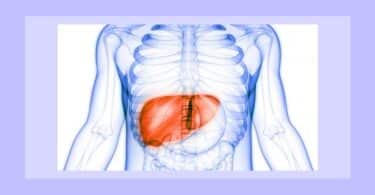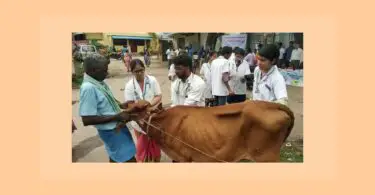Many lay homeopaths shy away from treating animals. I enjoy treating animals as much as I do treating people. You need to learn different skills, but they can be just as rewarding as learning new methods. Whilst animals can’t give you subjective symptoms, I feel they are less complicated than people. I mean animals no disrespect in saying this. They are more healthy, less corrupt, more honest than people. So the polychrests do work very well.
This means most animal prescribing is on the therapeutic level, and we rely heavily on observant people. Other factors, apart from homeopathy need to be considered, as there are multiple maintaining causes. In people, I let the remedy work its magic on changing bad habits. You can’t do this with animals.
In cats and dogs particularly, one of the main maintaining causes is the diet. Commercial pet food is, for the most part, very low in quality and very high in toxicity. Get the animal onto a quality, natural diet and many ailments clear up on their own. Holistic veterinarians tend to do themselves out of a job, by getting the diet changed as a priority.
For rabbits and horses, I try to steer the people away from proprietary feeds and synthetic supplements to fresh food, whole grains and plant based supplements.
Another maintaining cause in dogs is the human behaviour. People need to understand ‘dogese’ and learn to ‘speak’ it. Otherwise, unconsciously they are creating great anxiety in their dogs, especially the sensitive ones. Learning to understand ‘dogese’ is quite simple when you follow Jan Fennell’s methods. I know less of Cezar Milan’s ideas, but perhaps they are similar.
http://www.janfennellthedoglistener.com/
I had only recently discovered Jan Fennell when a dog was bought to me. During the consultation, he would not stop barking. Neither of us could hear ourselves think. I applied Jan’s methods, which are kind, gentle but firm. Within about 10 minutes, he sat quietly beside his person and did not murmur the rest of the consultation.
Pets do tend to help shoulder the emotional burden of their humans. Suggesting the humans should be next in line for treatment in order to help their pet is often met with surprised acceptance.
Keeping a pack/herd animal alone can cause severe anxiety that is unlikely to be fully resolved without at least one companion. Rabbits, dogs and horses are often kept alone through ignorance. Educating their people becomes part of the consultation.
But perhaps the most efficient way of determining whether your choice of remedy is appropriate is by asking the animal. As with babies and toddlers, animals are very close to their source. This means they instinctively know what they need. Learning to trust their wisdom may be a challenge for a left brain oriented person (who uses logic more than instinct and feeling), but trust it you can. It can take time to learn to read their subtle body language, just as it can take them time to realise they do have a choice.
I was called to see Aaron, a 6 year old warmblood horse. He was purchased in Victoria, Australia as a three year old, at the time of the equine influenza. He was shipped across the country. On arrival he had diarrhoea, which continued. Over time he was wormed, drenched, had ultra sounds which found an inflamed colon, put on steroids, antibiotics and various other drugs. The diarrhoea eventually cleared up, but he became tender to touch especially around the belly. He was unhappy in his work and with his paddock mates. He wasn’t eating all his food. He had a worried expression. He occasionally had an inflamed throat. It was considered that he might have encysted strongyles (common intestinal worms in horses).
When I repertorised his symptoms I came up with Mag mur and Gelsemium. I offered both bottles (stoppered) to him, separately. He didn’t distinguish between either, gently nudging both.
I gave him a dose of Mag mur 200c and suggested he was offered it daily for a couple of days. He accepted the doses, and some improvement was seen, but it was minor. After about a week, he was offered both bottles again. This time, he ignored the Mag mur and practically ate the Gelsemium bottle. One dose of the 200c restored his appetite, his love of playing with his paddock mates and his tenderness. He is now happy to work again.
I often leave more than one remedy with people who are new to homeopathy. They tend to give homeopathic treatment just one attempt, so I like to ensure I have covered everything I feel is appropriate.
Headley is a 17 year old cat. He was on a reasonable natural diet, but lacked bones, an essential ingredient for cat’s natural health. He was treated regularly with commercial wormer and flea preparations. He had been vaccinated early in his life but not for a few years. He had developed a swelling between his molars, an epulis, on the lower right side. He was off his food, since the last flea treatment, and was urinating on the bed or sofa, a sure sign that all is not well.
Although benign, an epulis can be aggressive and invasive. This one appeared painless to touch, but it seemed to affect his eating. Despite this, he was overweight. Sometimes he had diarrhoea. Apart from the epulis, there was little to go on.
I suggested that he was fed a 100% natural diet, which would negate the need for toxic worm and flea preparations.
Repertorising epulis comes up with Calc, Nat mur and Thuja. Because of the lack of essential calcium in his diet, I chose Calc carb 30c.
Cats are not so responsive in choosing remedies as dogs and horses can be. Rather than indicating a good remedy, they will simply not struggle when it is given. Headley’s person is a worrying kind and apt to overdose. So I suggested she put the remedy in a small bowl of water and allow Headley to take it as and when he felt he needed it. The normal water was to be left.
A few weeks went by before she phoned me. Headley’s swelling had disappeared. And he was eating well.
Teddy, a 13 year old medium size dog of mixed breed was discovered breathing heavily, unable to stand and with a large lump on the left side of his abdomen. He had slowly deteriorated over a week. He yelped when picked up, was drinking more than normal. His vision had been deteriorating recently – he was bumping into furniture. His appetite was down. His person was under a lot of family pressure to have him euthanised, but she felt homeopathy could help this time, as it had done in the past.
He had previously done well on Phosphorus, but it wasn’t helping this time. Close contact over the next few days finally revealed a purple discolouration of his skin. This symptom, together with the lump indicated that a bite may be the culprit, possibly from a local poisonous spider.
Teddy received Lachesis 30c a few times the first day. His progress was good, now standing and eating well, so it was continued as he needed it. He fully recovered in three days.





Do you have a remedy for a 4 year old healthy pug who is urinating in a house and shedding a lot? He is not fixed and is lovely.
Alla, homeopathy is more about all the details of the cause, than a quick fix of a physical problem. A consultation would be necessary to get to the bottom of the problem.
Thank you so much for answering. Can we conduct the consultation over the phone?
Thank you Madeleine for that wealth of information presented so clearly. I belong to two beautiful cats and appreciate every tip for keeping them well. I hope you will write more for hpathy.
Of course we cannot treat each individual (human or animal) with the same remedies. But that is just so intrinsic to homeopathy. However I am shocked to see the name of Cesar Milan mentioned, even worse – stating that you do not know him. Cesar Milan excels in ignoring the dog’s body language and his way of “whispering” is more like a loud shout. Please do watch some little video’s of his “televised” work before you mention him in a holistic article. He is nothing more than an untrained dog bully. Sorry to say. jan Fennell excels in making clear who is the alpha – pack leader – boss – whatever you like. There are more humane and dogfriendly approaches nowadays.
Thank you for clearing that up. Some of my patients tell me he is good, but I have not studied his methods.
I would like to draw the attention of your readers to this blog post- Does homeopathy work in animals? (http://homeopathicure.wordpress.com/2011/08/23/does-homeopathy-work-in-animals/)
A case of a dog has been described with pictures before and after treatment.
Thanks Madeleine:
Very informative.
Please write more for homoeopathy, and whenever you write, please send me on my mailing address as mentioned above.
Thanks & Regards